COUNTERING THE ‘NUCLEAR FOR CLIMATE’ NARRATIVE: TESTIMONIES FROM THE FRONTLINES OF THE NUCLEAR FRONTIER
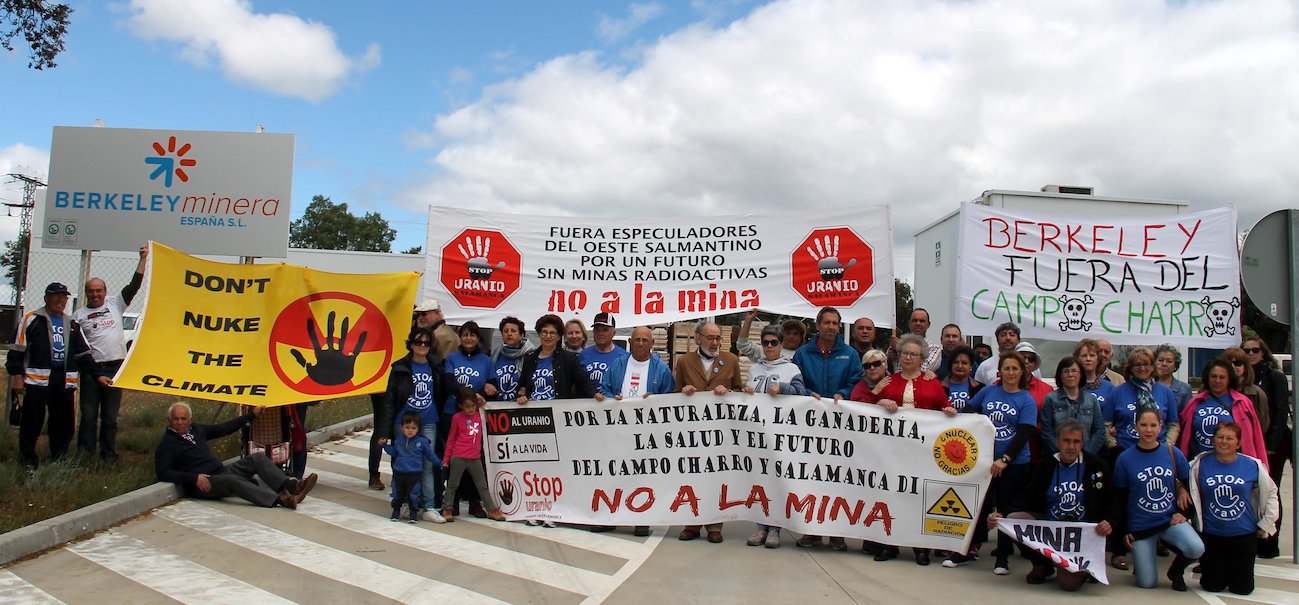
‘NUCLEAR FOR CLIMATE’ AS AN EXTRACTIVE STRATEGY
Last year’s COP meeting has just begun. Postponed due to the pandemic – Glasgow, Scotland, was to host the summit in November 2020 – representatives from around the world are once again turning their attention to the problem of climate change at the UN conference. COP26 in Glasgow will get a lot of attention, but probably not enough measured against the undisputed and enormous challenges of anthropogenic climate change. The year 2021 has – yet again – made it clear in many parts of the world, and in some cases cruelly[1], that urgent action is needed. The latest IPCC report once again provides the scientific insights, but the political and economic consequences remain controversial and the result is all too often inaction. The changes necessary to avert complete breakdown will have to be more profound than merely changing electricity suppliers. At stake is a profound change in the way we produce, consume and live. In short, the dominant paradigm in the fight against climate change lacks a post-growth strategy. But some propagate a supposedly simple carbon-free way out: nuclear power. For years now, a narrative has been gaining renewed support in certain corners, according to which the production of electricity through nuclear fission seems imperative for climate change mitigation. Against the backdrop of COP26, Beyond Extraction draws a line from nuclear lobbying in the name of climate protection to the centre of our collective’s work so far, the critical examination of the consequences and devastation of mining, exploration, and the speculation in raw materials.
In this brief article, we look at the link between the nuclear lobby, the mining industry and resource speculation and bring to the forefront the people and places who would be affected by uranium mining. While the nuclear industry is trying to present itself internationally as key to the energy solution of the climate crisis, the mining industry is waiting in the wings to offer new and old uranium mining projects as investment opportunities. But what about the people and places that would be affected by uranium mining? In order to answer this question, we need to focus on an area mostly ignored in the general debate: the initial stages in the nuclear fuel chain[2].
The various other reasons[3] for which nuclear power cannot be a valid answer to the climate crisis are unaffected by this.
Beyond Extraction therefore sought to amplify the voices of those campaigning against old and projected uranium mines and the devastating legacy of nuclear fuel production in Canada, Greenland, Namibia, Spain, and Tanzania. They are pushing for a carbon free, truly renewable future of energy production and against a false promise of nuclear power.
NUCLEAR ENTHUSIASM – NUCLEAR RENAISSANCE – NUCLEAR FOR CLIMATE
It is not the first time that nuclear power has been seen as a technological fix to major societal problems, nor the first time that climate change has been claimed as a problem to be solved by nuclear reactors. But all nuclear enthusiasm plays under the conditions and omens of its time. In the 1950s quasi-utopian future conditions were associated with the splitting of the uranium atom. The nuclear enthusiasm of the 1970s took place especially under the pretext of the oil crises and the subsequent debates on energy security. In both phases of great expectations in nuclear power, large mines were developed and uranium was explored across the globe. But the great expectations did not materialize as projected. This was no different in the overblown discourse of the ‘nuclear renaissance’ of the 2000s with its hyper ambitious growth scenarios. And yet, high future expectations in growing nuclear electricity production led to uranium exploration, mine expansions and new development activities. And this is precisely what we must be aware of today when governments, lobbying organizations and even some misguided environmentalists are talking about nuclear power being a potential force against the climate crisis. In fact, investing in uranium stocks is already being touted as a way to profit from climate policy[4].
GREENING NUCLEAR POWER’S FINANCES!?
For some years now, the COP summits have repeatedly become an arena of the nuclear lobby. Attempts to present itself as a potential solution to the climate crisis at the Glasgow summit already led to debates in the run-up to the summit[5].
Self-proclaimed pro-nuclear activists say they want to take the COP meeting by storm[6] and major nuclear companies and its lobby are represented in Glasgow and beat their radiant advertising drum. ‘Nuclear for Climate’ is their motto and it is echoed in different parts of the world. In the EU, for example, there is currently a serious debate under the slogan of a Green Deal about whether the design of a European sustainability label in the financial sector (the so-called EU taxonomy) should, in the future, treat the financial support for nuclear power as support for sustainability and climate neutrality. This would label subsidies for nuclear power as a supposedly sustainable technology[7]. Matter of fact, an assessment published in April 2021 by the EU’s Joint Research Centre (JRC)[8], concluded that nuclear energy is not harmful to humans or the environment. This assessment is, of course, a travesty for all those who have lost land, health and livelihoods to uranium mining or would be threatened by it to say nothing of those harmed by the various catastrophic meltdowns, the most recent being in Fukushima, Japan in 2011. But Europe is not alone in this: Canada provides significant support for the development of so called Small Modular Reactors (SMRs)[9]. In the USA, too, plans are being discussed to provide financial subsidies and relief for nuclear energy, which would happen at the expense of the expansion of renewable energies[10]. One of the arguments is climate mitigation.
RESOURCE SPECULATION AND THE REVIVAL OF A DINOSAUR AT PDAC AND ELSEWHERE
Beyond Extraction’s central activities so far have focused on the critical monitoring of the annual Toronto-based Prospectors and Developers Association of Canada (PDAC) convention. PDAC is amongst the most important global investment conferences for the mining sector. During the 2000s, the nuclear renaissance discourse translated into talk about market fundamentals that would indicate that prices for uranium would definitely have to rise due to a definitely rising number of operating nuclear reactors. So naturally the idea of a materializing nuclear renaissance was greeted with enthusiasm amongst the speculative prospectors and developers.
Measured by the aims of its proponents, the nuclear renaissance remained rather limited, yet it resulted in rampant speculation with uranium inventories, stocks, futures, prospective geology and flushed investment money into uranium exploration ventures. PDAC is not only emblematic of this form of speculation but is also one of the most important sites and gatherings for those who seek to turn geological riches into private profits. In its coverage of the PDAC convention in 2007, while uranium spot prices were approaching their peak during the so called nuclear renaissance, the Northern Miner (2007) reported that “this was uranium’s year at the PDAC, with junior explorers touting hundreds of new uranium exploration and development projects located around the world”. The mining industry journal emphasized further, “there’s actually a lot of [uranium] lying around the planet; the tricky part is jumping through the regulatory hurdles, mining it and selling it at a profit”[11].
The nuclear renaissance talk ended with the aftermath of the reactor core meltdown in Fukushima, Japan in March 2011. Containing the damage to the industry’s image was the new motto and seemingly a job as hard as containing radiation in and around Fukushima Daiichi – which, even a decade after the accident, poses major challenges. Momentum in the nuclear industry today is undoubtedly linked to a collective amnesia about the catastrophic meltdown at Fukushima, coupled with the return of the renaissance discourse in the face of climate change.
Central to this is the investment in research and development of SMRs. For years now, PDAC has offered a platform for the nuclear industry and its most committed partners, such as the Government of Canada, to offer a vision of the nuclear industry that is more subtle and, crucially, more mobile. In Canada’s Roadmap to SMR’s[12] and its Minerals and Metals Plan, small and modular reactors are positioned as a powerful way for the mining industry to reduce its carbon emissions and the overall footprint of a project. Similarly, French president, Emanuel Macron, has recently spoken in favour of continuing down the nuclear path, with reference to the presumed developments of SMRs as a way of combatting climate change. Yet, as is usual, the promotion of this re-imagined dinosaur fails to account for the risks associated with both increasing demand for uranium and the danger of making nuclear reactors mobile. Take, for example, the ‘Akademik Lomonosov,” the only floating, and therefore mobile, nuclear power plant today. Built by Rosatom, the Russian state-owned Nuclear Corporation it is stationed at the arctic port town of Pevek. Rosatom claims that the power station was good to avoid C02 emissions, yet as an enabler of enhanced oil, gas, and mineral exploration and potential extraction in the Arctic region it is effectively a means to dig out more hydrocarbons.
TESTIMONIES FROM NUCLEAR POWER’S EXTRACTIVE FRONTIER AND THOSE ACTIVELY RESISTING ITS EXPANSION
Nuclear power is effectively on the decline[13]. Industry’s repeated rescue attempts, however, are misleading, they waste time and resources, and they slowly start to inflate a speculative bubble around uranium resources. It is worrying that the narrative of a possible, albeit nuclear, “business as usual” could gain momentum in the face of increasingly severe climate change impacts. This is perhaps especially so for the communities affected by uranium mining or exploration whereby the threats of extraction are dangerously high. This list of testimonies is limited and would have to be expanded in order to do justice to the global spread of experiences with uranium mining and exploration. Yet here campaigners from across the globe offer their rich insights about the climate crisis and its mitigation.
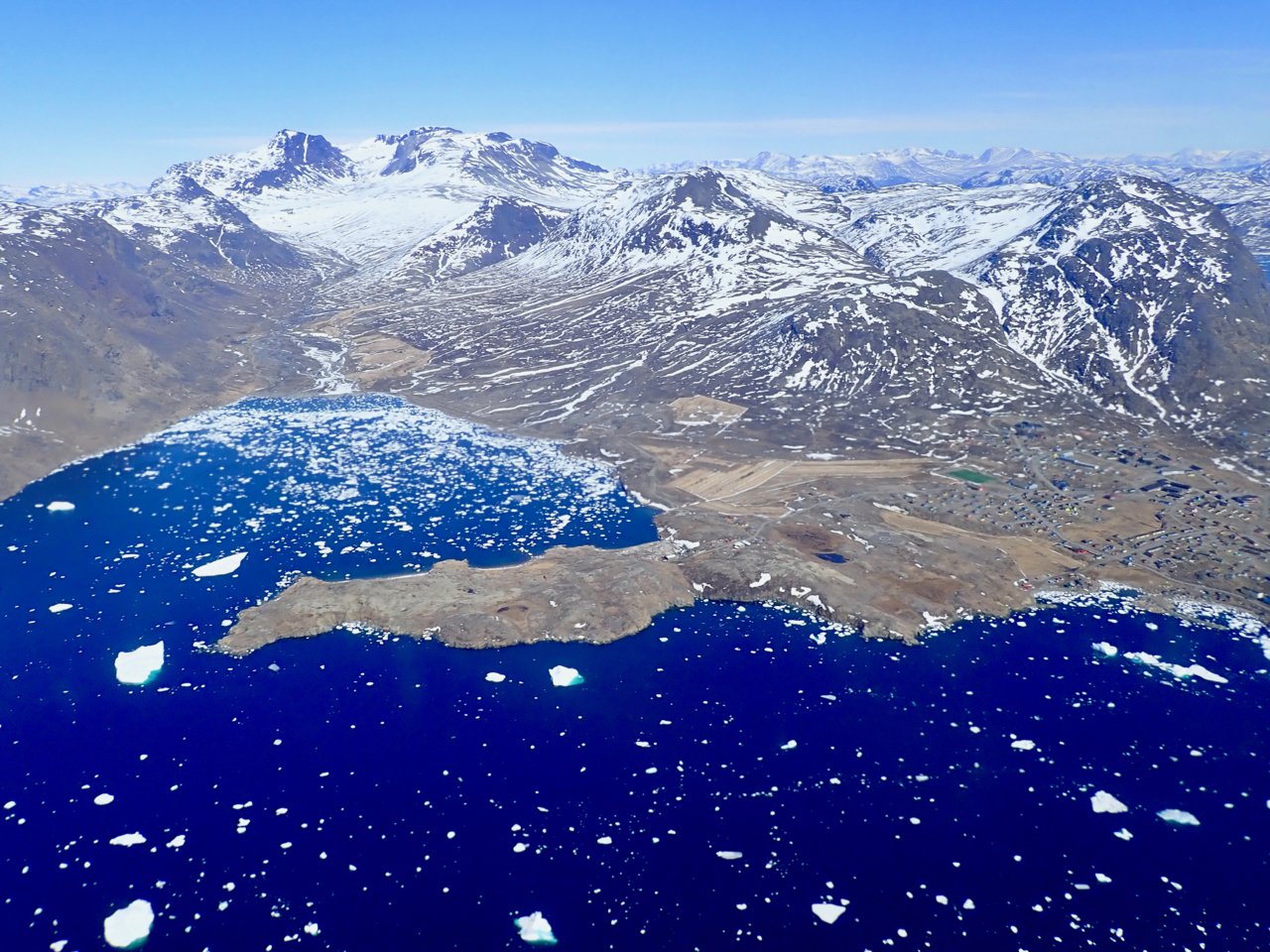
GREENLAND
My name is Niels Henrik Hooge and I am from NOAH Friends of the Earth Denmark. NOAH opposes uranium mining as well as any type of large-scale mining in the Arctic region. Currently, there are about 90 active large-scale exploration and exploitation licenses in Greenland, covering thousands of square kilometres, and almost all related to surface mining projects. Most of them are located in Southern Greenland, which has the country’s richest biodiversity and all of Greenland’s farm land.
The Arctic environment is particularly vulnerable to pollution, because it recovers very slowly. The long-term economic costs of pollution in Greenland could be so high that they by far exceed the short-term economic benefits of large-scale mining and not least uranium mining.
Many other countries have experienced negative impacts, including widespread pollution of water, land and air, and the destruction of pristine nature and precious habitats.
For these reasons, NOAH calls on the Greenlandic and Danish governments, the European Union, and everybody else who takes an interest, to help establish an Arctic sanctuary. The inspiration could be the Antarctic Treaty, as supplemented by the Madrid Protocol signed in 1991, but respecting the fundamental difference represented by the populated nature of Greenland and the Arctic and the rights and needs of the peoples and nations of the Arctic region.

NAMIBIA
My name is Bertchen Kohrs, I am the chairperson of Earthlife Namibia, a voluntary non-profit, non-governmental organisation, concerned about environmental and social justice and sustainable development. Earthlife is located in Windhoek, the capital of Namibia.
The nuclear cycle starts right here in Namibia where uranium is extracted by several foreign companies. Presently two open-pit uranium mines are fully operating, one mine is put under care and maintenance, and one mine will reopen soon.
In the face of a major number of uranium exploration licenses granted in 2006 /2007 by the Namibian government, Earthlife Namibia saw the need to research on the issue of uranium mining, raise awareness in the public and with politicians about the dangers and risks connected to uranium mining and the nuclear industry in general and initiate public debates on the issue.
We conducted studies with the assistance of radiological scientists on the impact on the environment and on the health of mine workers. The studies clearly show significant environmental damage; contamination with uranium and other toxic substances were detected in soil and groundwater.
The health study clearly indicates that many workers develop severe disease symptoms from exposure to radiation and dust that are not recognized by the mines as occupationally related diseases. The workers pay a high price for being employed.
Uranium mining companies are inaccessible, non-transparent and spread humiliating lies to silence the population. Namibia is a desert country with an abundance of sun and wind, thus has the top conditions for renewable energy. The past has proven many times that nuclear energy is dangerous, dirty, not sustainable, too expensive, extremely risky, and generates non-manageable waste. Proliferation of nuclear weapons and munitions is a permanent threat to the planet. Nuclear energy is not at all climate friendly, on the contrary, nuclear industry hinders the development of renewable energy.
The only sensible solution is to leave the uranium untouched in the ground. This is what Earthlife Namibia fights for.
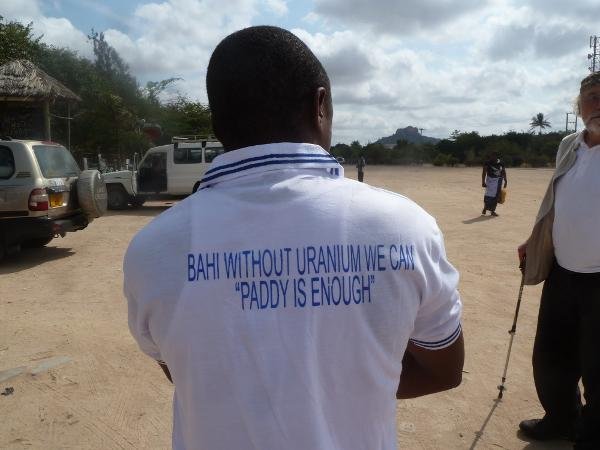
TANZANIA
My Name is Anthony Bonifasi Lyamunda, I live in Dodoma, the Capital City of Tanzania and I am the founder of CESOPE (Civil Education is the Solution to Poverty and Environmental Management). Our organization has long supported the people of Bahi, an administrative district very close to Dodoma and the place where I grew up. But since the mid-2000s, we have been confronted with a threat that was previously unknown to us. In the places where the people of Bahi and neighbouring districts live and work, farm and fish, uranium has been explored and mining has been considered. In 2009 CESOPE started an advocacy campaign against the plans to mine uranium. We succeeded in creating substantial awareness about the problems coming with uranium mining among the people living in the area.
We oppose uranium mining because of the negative impact it would have. The central Tanzanian Bahi depression and its wetlands are of great importance for our livelihoods and for food security in the region more generally. Uranium mining remains a potential threat in Tanzania and worldwide as long as nuclear energy is still desired by various countries. Now that prices are slowly recovering we fear that the plans will be resumed and the ecological diversity in Bahi and the livelihood of many people will be threatened again. For us, uranium mining means the violation of human rights, land grabbing and all the many environmental problems that go along with it. When the Bahi wetlands are drained, that would contribute to climate change. Nuclear energy is not the solution, it is part of the problem. That’s why we are standing up for the ecological and socially just improvement of the living conditions in Bahi and Tanzania as a whole, without uranium mining.
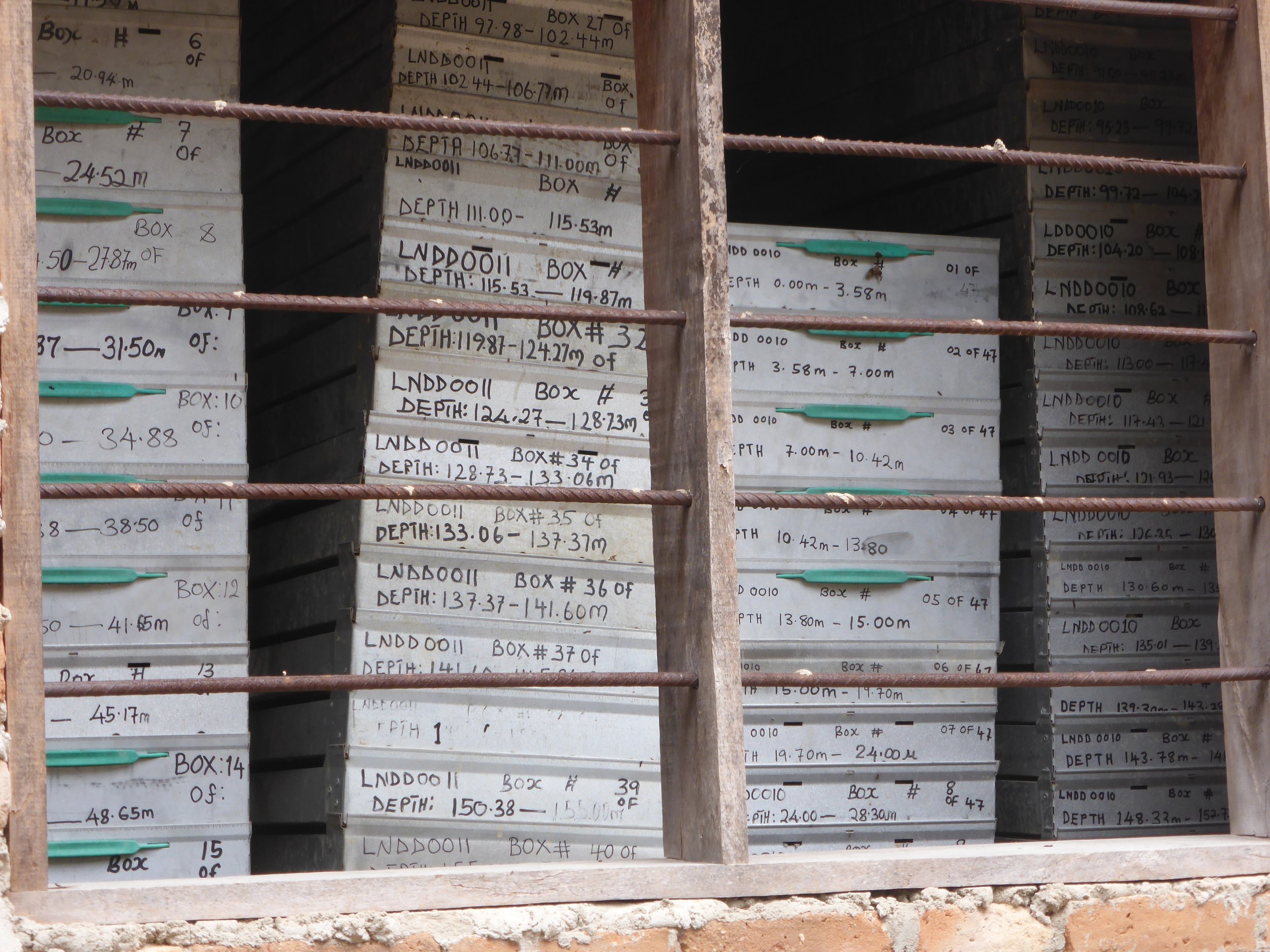
SOUTHERN TANZANIA
Anonymous
I don’t want to reveal my name because otherwise I would be threatened with repression, as it was the case in the past, but I continue to oppose uranium mining because it destroys our environment and is harmful for all living beings.
My activities and those of my fellow campaigners are directed against uranium exploration and mining projects in southern Tanzania. Particularly noteworthy is the fact that some of the projects are located within and on the periphery of a protected area, the Selous Game Reserve. Today, only one project remains, and it may start mining soon, but others could also be revived if uranium demand increases[14].
But at the beginning of these plans, all this was unknown to us. For example: When the plans to mine uranium here became public people were only informed about the benefits they will get from uranium mining and that the mineral has no effect on humans. During some of the explorations, local workers have not even been provided with protective gear. Our campaigns are directed against such misinformation and its consequences. We have made and continue to make every effort to inform our communities about the consequences of mining projects in all transparency. We would like to see a future that is not oriented toward the temptations of short-term revenues from uranium mining and that ignores its dire consequences.
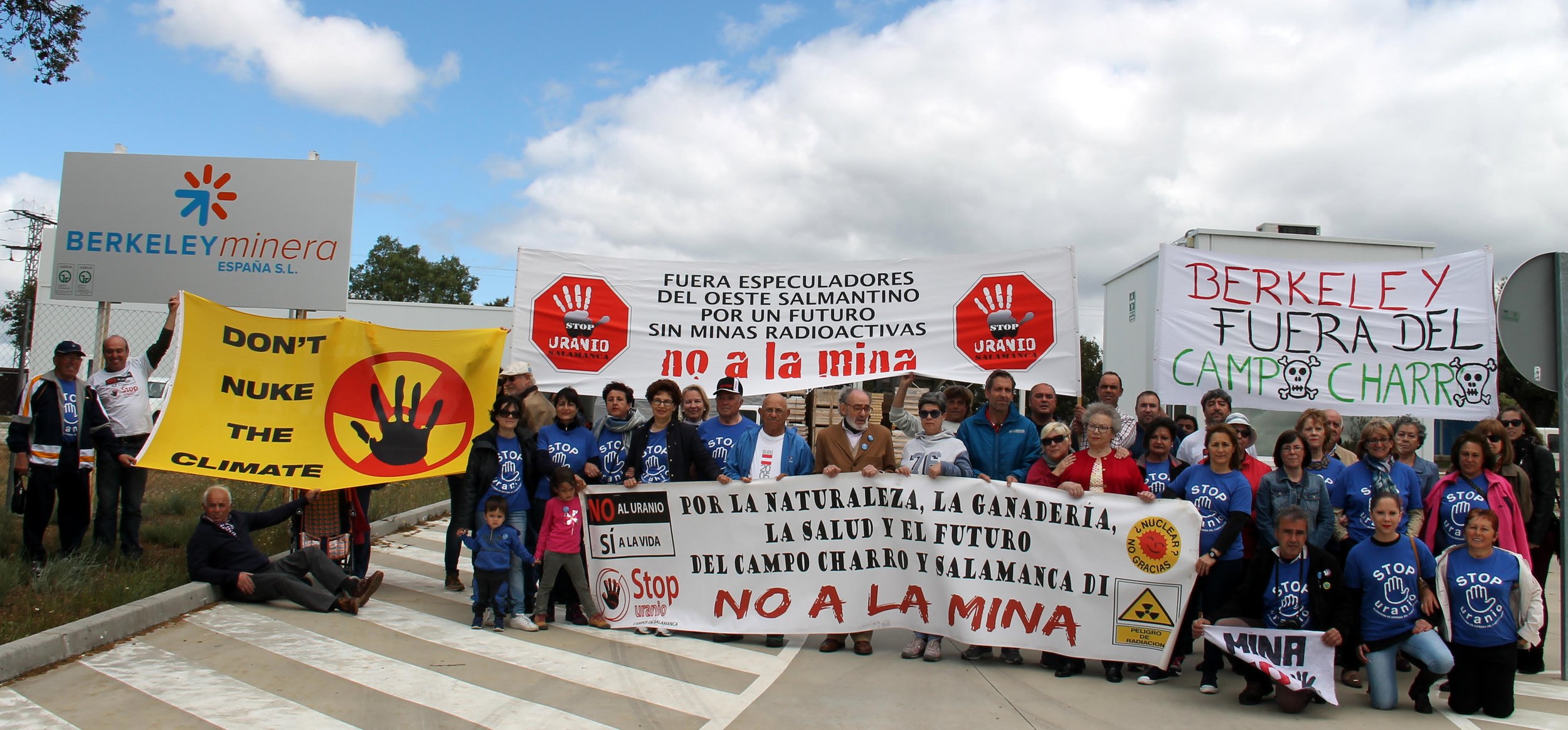
SPAIN
My name is José Ramón Barrueco and I am the spokesman for the Stop Uranium Platform, an organization that has been fighting against an Australian multinational, Berkeley Energia Limited, which intends to open uranium mines in the province of Salamanca, as well as a uranium processing plant in the town of Retortillo.
We oppose uranium mining for health reasons for the inhabitants of the area, for environmental reasons as the mining facilities are located next to areas protected by the Natura 2000 Network and for economic reasons as it destroys more jobs than it can create. Nuclear energy is tremendously unsupportive of future generations, as it leaves radioactive waste that will take thousands of years to lose its harmful effects, so it should not be exploited by the current generation.
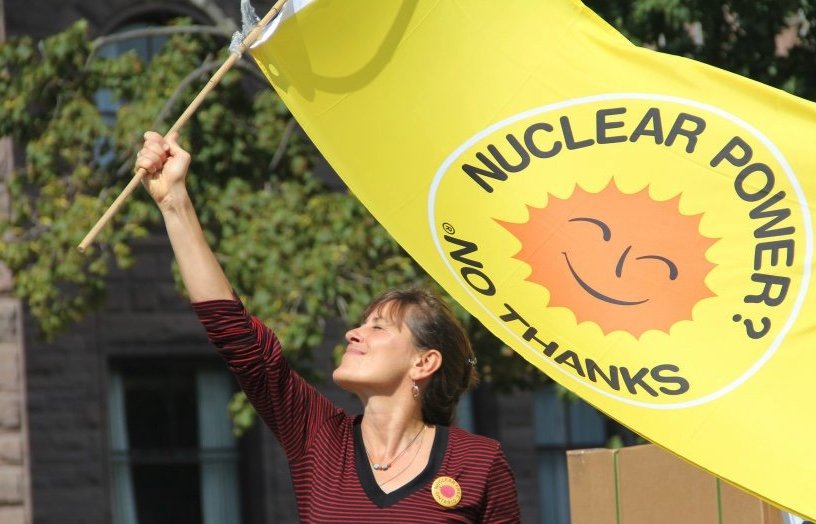
CANADA
My name is Angela Bischoff and I work with the Ontario Clean Air Alliance. Industry efforts to “greenwash” nuclear energy make a mockery of clean energy goals.
All stages of the nuclear fuel chain, from uranium mining, processing, refining, fuel fabrication, reactor operations and nuclear waste handling, all emit radioactive, carcinogenic pollutants, and leave a toxic legacy of radioactive wastes.
Nuclear is not a climate solution – it’s too slow to make a difference during this climate decade and diverts valuable investment from renewable energy technologies.
In Ontario, for example, the Doug Ford government cancelled 758 renewable energy projects and slashed the budget of our conservation programs by 60%. It then quietly bought up 3 gas plants, committing to ramp up gas power pollution by 500% or more by 2040, and proceeded with plans to rebuild 10 of our aging nuclear reactors and build a new SMR (small modular nuclear reactor) in the GTA (Greater Toronto Area).
Meanwhile, conservation and renewables are now less than half the cost of a new nuclear reactor and even lower cost than running our existing reactors – with no radioactive waste legacy to leave for untold future generations.
The good news is we don’t have to settle for nuclear and fossil fuels, both which are on the decline globally. In Ontario we can replace our gas power by 2030 and all nuclear extensions and rebuilds with a combination of made-in-Ontario wind and solar, conservation, and Quebec water power and storage imports. QC has massive surplus water power and storage that could turn Ontario’s intermittent wind and solar energy into a firm 24/7 source of baseload electricity supply for Ontario – at a fraction of the cost and time of nuclear.
The world is moving to wind/water/solar. Wasting more dollars and time on nuclear would be a travesty. Nuclear is a dirty, dangerous, expensive false solution.
THE CLIMATE CRISIS NEEDS URGENT ACTION – NUCLEAR IS A BRAKE PAD
Anyone who claims to be able to protect the climate with nuclear power fails to grasp the disastrous consequences of uranium mining, the nuclear fuel chain, and the various and overlapping environmental crises the planet currently faces. It is well evidenced that climate change does not affect everyone equally, its consequences unequally distributed globally. The nuclear lobby’s motto “Nuclear for Climate” is yet another example of how this dinosaur of an industry is trying to shirk responsibility at the expense of those who are already affected by climate change and who contribute very little to its underlying conditions. After all, the major uranium mining areas are rarely located where their products are to be converted into electricity. Of course, the industry’s narrative catches on with those who believe in a “business as usual” utopia. But, we cannot mine our way out of the climate crisis[15] and while it may not be perceived as such, nuclear power would be one attempt to do just that. “Nuclear for Climate” is merely a continuation of the same logics that have landed us in the climate crisis to begin with. It is oriented around the idea that we can dredge our way out of the crisis at the expense of others, who are too often hidden from view. Simply put, “Nuclear for Climate” is another inequitable and unjust approach to global environmental breakdown. Those pushing for nuclear “solutions” to the climate crisis must realize that environmental breakdown requires a post-growth strategy that moves beyond extraction – nothing less. Greening the surface of nuclear power won’t do the job.
—-
[1] https://www.oxfam.org/en/5-natural-disasters-beg-climate-action
[2] For more ‘Facts and Data about the Raw Material of the Atomic Age’ consult the ‘Uranium Atlas’: https://www.nuclear-free.com/uranium-atlas.html
[3] For a summary of the counter-arguments (too dirty, too dangerous, too expensive, too slow) see: https://dont-nuke-the-climate.org/
[4] https://www.ft.com/content/46c63e13-142b-4e18-b141-b621023e8073
[5] Nuclear power wants to enter the ‘Green Zone’, but is not admitted: https://theferret.scot/were-barred-from-cop26-nuclear-industry-complains/
[6] https://medium.com/generation-atomic/these-young-pro-nuclear-campaigners-promise-to-take-cop26-by-storm-133d8502c4ca
[7] For “[a] critical analysis of the EU Joint Research Centre technical assessment of nuclear energy” see: https://eu.boell.org/en/2021/09/01/nuclear-energy-eu-taxonomy and https://www.worldnuclearreport.org/IMG/pdf/wnisr2021-lr.pdf from page 38.
[8] https://ec.europa.eu/info/sites/default/files/business_economy_euro/banking_and_finance/documents/210329-jrc-report-nuclear-energy-assessment_en.pdf
[9] See for example: https://dont-nuke-the-climate.org/blog/dirty-dangerous-destruction
[10] For more on this see: https://www.nirs.org/category/greenworld/
[11] The Northern Miner (2007): Editorial: New uranium, moly projects flood PDAC. In: The Northern Miner 2007, 19.03.2007. Online verfügbar unter https://www.northernminer.com/news/editorial-new-uranium-moly-projects-flood-pdac/1000210861/
[12] See: https://smrroadmap.ca/
[13] For an overview of the state of the global nuclear industry consult the World Nuclear Industry Status Reports: https://www.worldnuclearreport.org/-The-Annual-Reports-.html
[14] For more information on the situation in the Tanzanian south see: https://uranium-network.org/current-projects/mkuju-river-uranium-project/
[15] https://theecologist.org/2021/may/25/we-cant-mine-our-way-out-climate-crisis /// https://cop26coalition.org/peoples-summit/extractivist-growth-and-alternatives-from-below-why-we-cant-mine-our-way-out-of-the-climate-crisis/